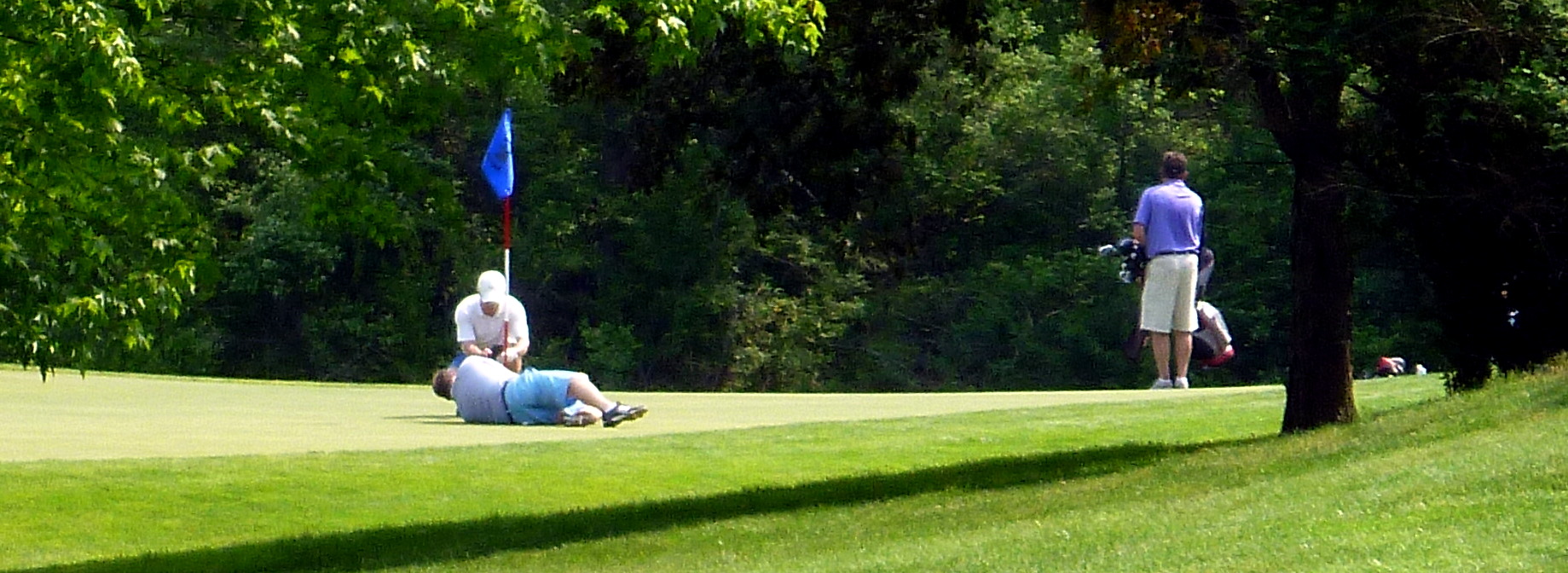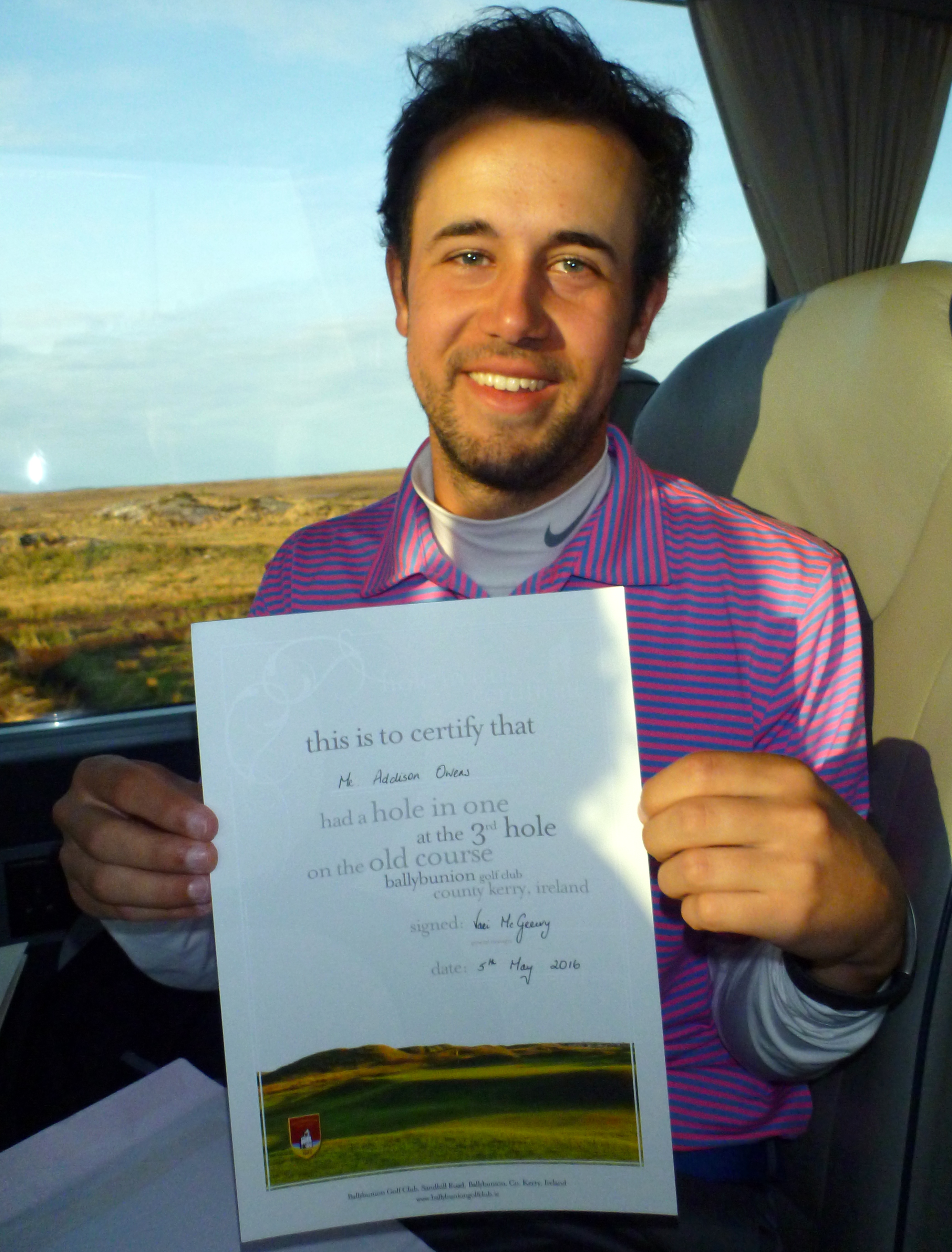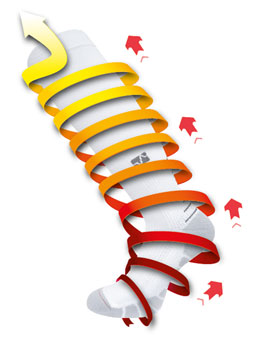
This past spring, eleven friends and I took a week-long golf trip to Ireland. Shortly before we left, Microsoft sent us four Band 2 activity trackers to field-test. Addison, Matt, Peter, and I wore them for the entire trip, then took them home. I’ve worn mine every day since we got back, and the other guys have worn theirs, too. One thing I like about the Band is that it’s sleek and futuristic-looking—a major difference from the Apple Watch, which to me looks like it was designed for preschoolers: My First Wristwatch.

During our Ireland trip, we mainly used our Bands to measure how far we walked. We played 36 holes every day but two, and I was especially interested to know whether longer, wilder hitters (Matt) walked farther than shorter, straighter hitters (me). And they did, by a noticeable amount—although the difference was blurred by the occasional willingness of the shorter, straighter hitters to detour into the dunes to help the longer, wilder hitters look for their ball. Overall, the four of us averaged about 15 miles a day, and roughly 100 miles for the week—a good workout. The longest day was the last (34,250 steps and 17.7 miles during 36 holes at Enniscrone) and the shortest was the fourth (21,336 steps and 11 miles during 18 holes at Connemara plus an afternoon hike along the shore of Lough Inagh).
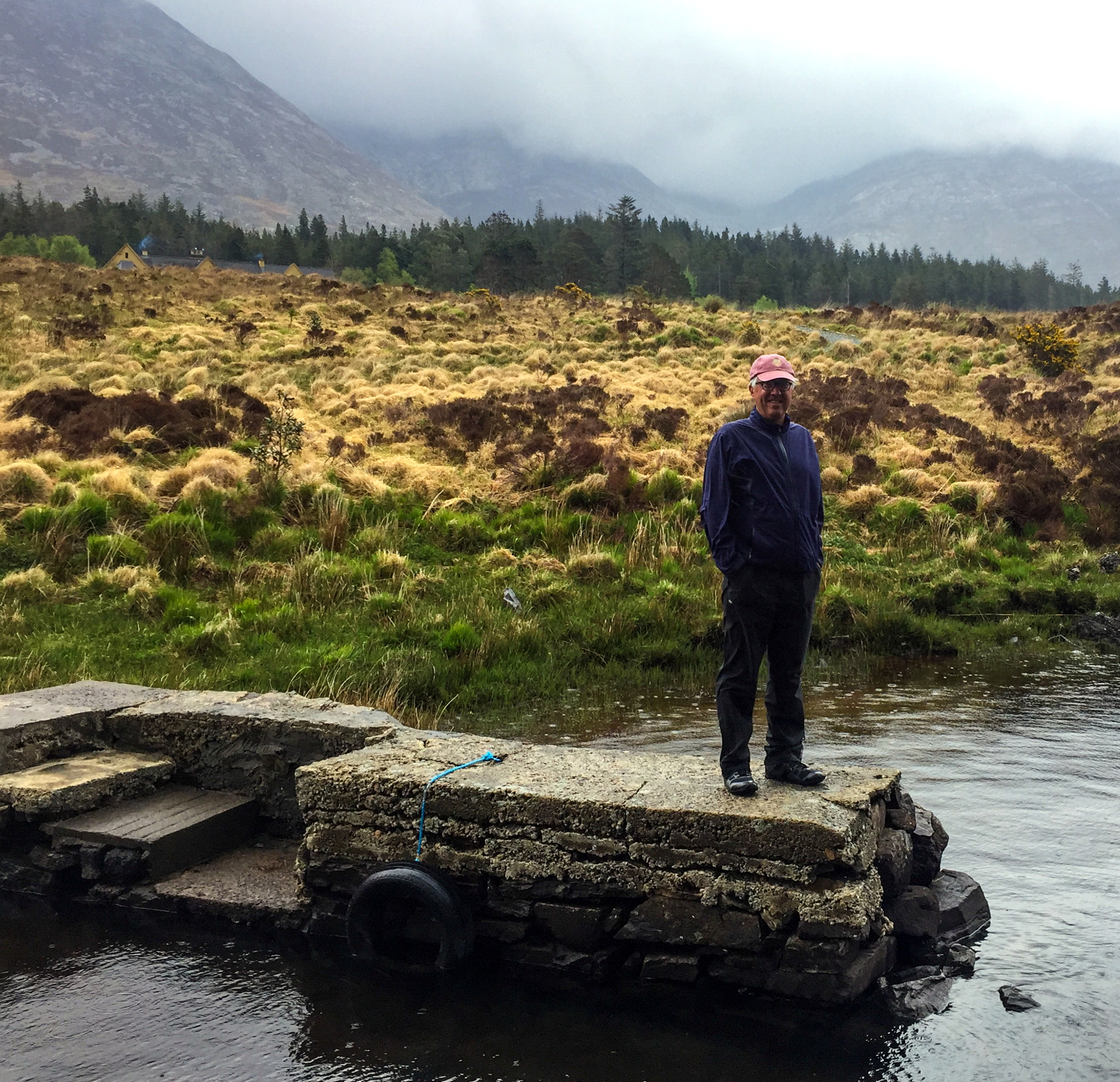
Lough Inagh. (Photo by Mike Bowman)
Setting up our Bands was pretty easy. You download a smartphone app called Microsoft Health, and pair the Band to the phone. For some of the Band’s functions—email, messaging, current-weather updates, Cortana—the phone needs to be within Bluetooth distance; for tracking walks, hikes, runs, bike rides, workouts, heartbeats, sleep quality, and so forth it doesn’t.

The Band is not waterproof, although it’s something more than water-resistant. I’ve accidentally worn mine in the shower (many times), in the swimming pool (once, for fifteen minutes), in the hot tub (not as often as in the shower, but almost), and in the rain (several times) — and I haven’t destroyed it yet. I’ve gotten better at remembering to take it off, but I do worry that someday I’ll go too far and it will self-destruct, the way my wife’s iPhone did when she dropped it in the toilet. I assume that if there were an economical way to make fancy electronic gadgets fully waterproof they’d all be fully waterproof. If I were in the fitness-tracker business, I’d have a team of geniuses working exclusively on water.
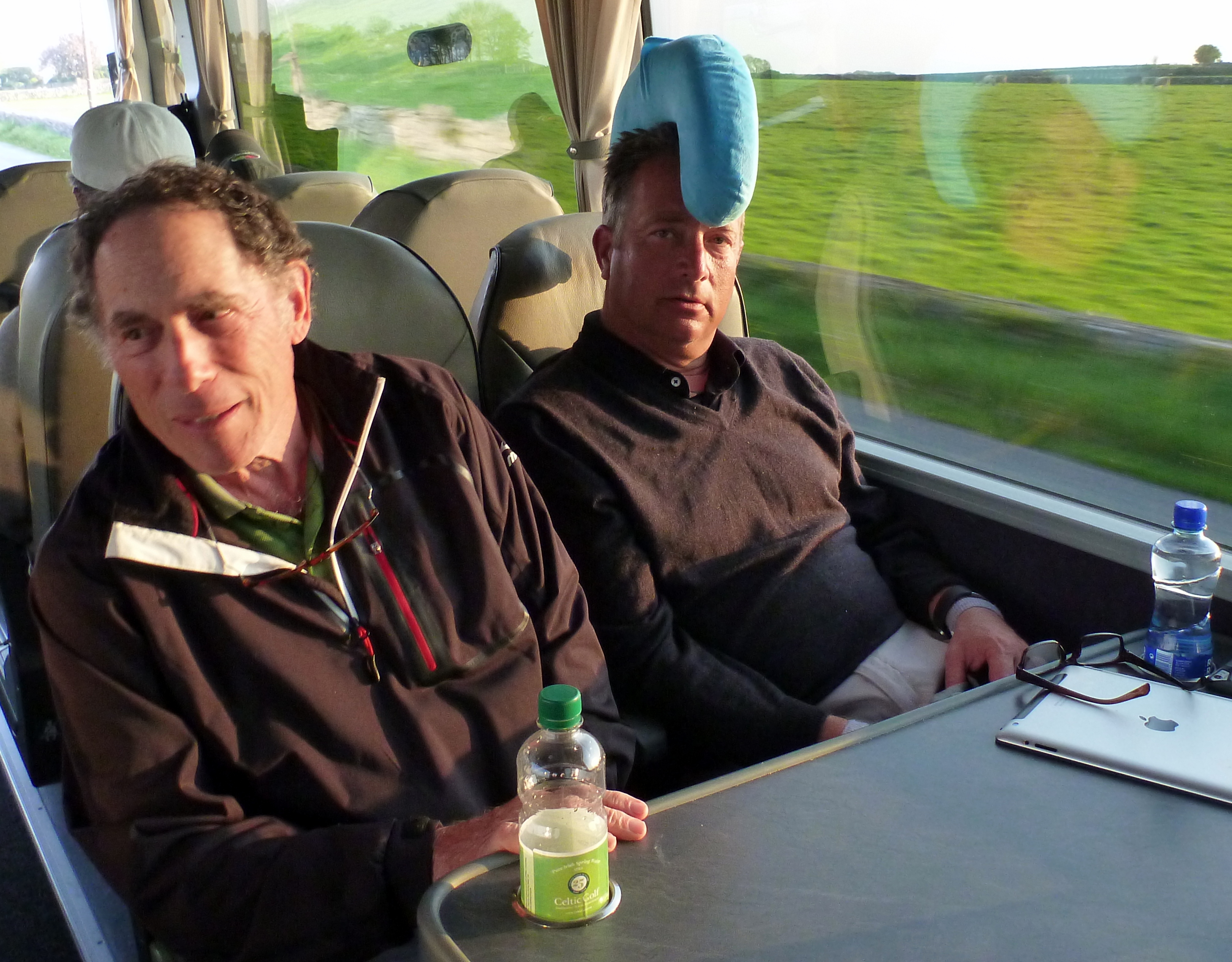
That’s Matt on the right. His Band is the thing on his wrist, not his head.
Microsoft and TaylorMade worked together to create a golf app, which turns a Band into a GPS rangefinder, shot-counter, and golf-related-statistics-compiler. “Stay focused on your game and forget about score tracking,” the website says. “Microsoft Band tracks your shots and measures your performance as you play. Sensors can distinguish between a practice swing and an actual shot.”

That’s all true, sort of. I wore my Band during a round at home, before our trip, and was impressed at how good it was at recognizing real golf shots. But it wasn’t perfect. It doesn’t understand about conceded putts, water hazards, out of bounds, provisional balls, or tap-ins, and if you knock away an opponent’s ball it thinks you’ve made a stroke at your own. That means that you can’t actually “forget about score tracking,” because you have to keep count independently, on a scorecard or in your head, and double-check the Band after every hole. Correcting miscounts is easy, but if you have to do all that anyway why bother with the app? The GPS part worked fine, although it was a little slow. Any GPS device pulls hard on a battery—it’s engaged in a two-way conversation with orbiting satellites—so to use it on a 36-hole day you almost certainly need to recharge between rounds. It does recharge quickly—much more quickly than a phone—and if you aren’t using an app that depends on GPS the battery will easily last two days.

GPS is totally worth using with the app that tracks bike rides, since it gives you lots of information, including top speed, average speed, elevation gain and loss, best split, average split, and heart rate. It also superimposes your route on a map, and shows you exactly where you cruised and where you struggled. There are similar features for runners. I’m not one of those, thank goodness, but if I were I could upload Band data to various popular run-tracking utilities, too. The hiking app also maps your route, although if the GPS is in power-saving mode it makes some funny mistakes when it makes educated guesses about your next moves. I used the hiking app on the golf course one day, and it told me later that I had walked into the center of the pond on the fourth hole, then changed my mind and walked back out. But the big picture was correct.

Strandhill Golf Club, 29,730 steps, 15.3 miles.)
The Band has some quirks. Like some other fitness trackers I’ve tried, it counts bumps and potholes on the Hutchinson River Parkway as steps (and lots of them); you can keep that from happening by taking it off, or turning it off, when you’re driving on rough roads. If I click on the “run” tile before walking my dog, it credits me with having burned more calories than it does if I leave the Band in standard step-and-heartbeat-tracking mode, even though my route and pace are exactly the same. And the difference is bigger still if I click on the “exercise” tile before taking the same walk, or before playing a round of golf. I assume that when I do those things the Band isn’t suddenly detecting some new and previously unsuspected source of energy expenditure, but is simply applying a different formula to the same small number of detectable variables. It’s a handy feature, though. I like being able to double the health benefit of taking a walk simply by clicking an icon. Look! I just earned an entire pint of Cherry Garcia!
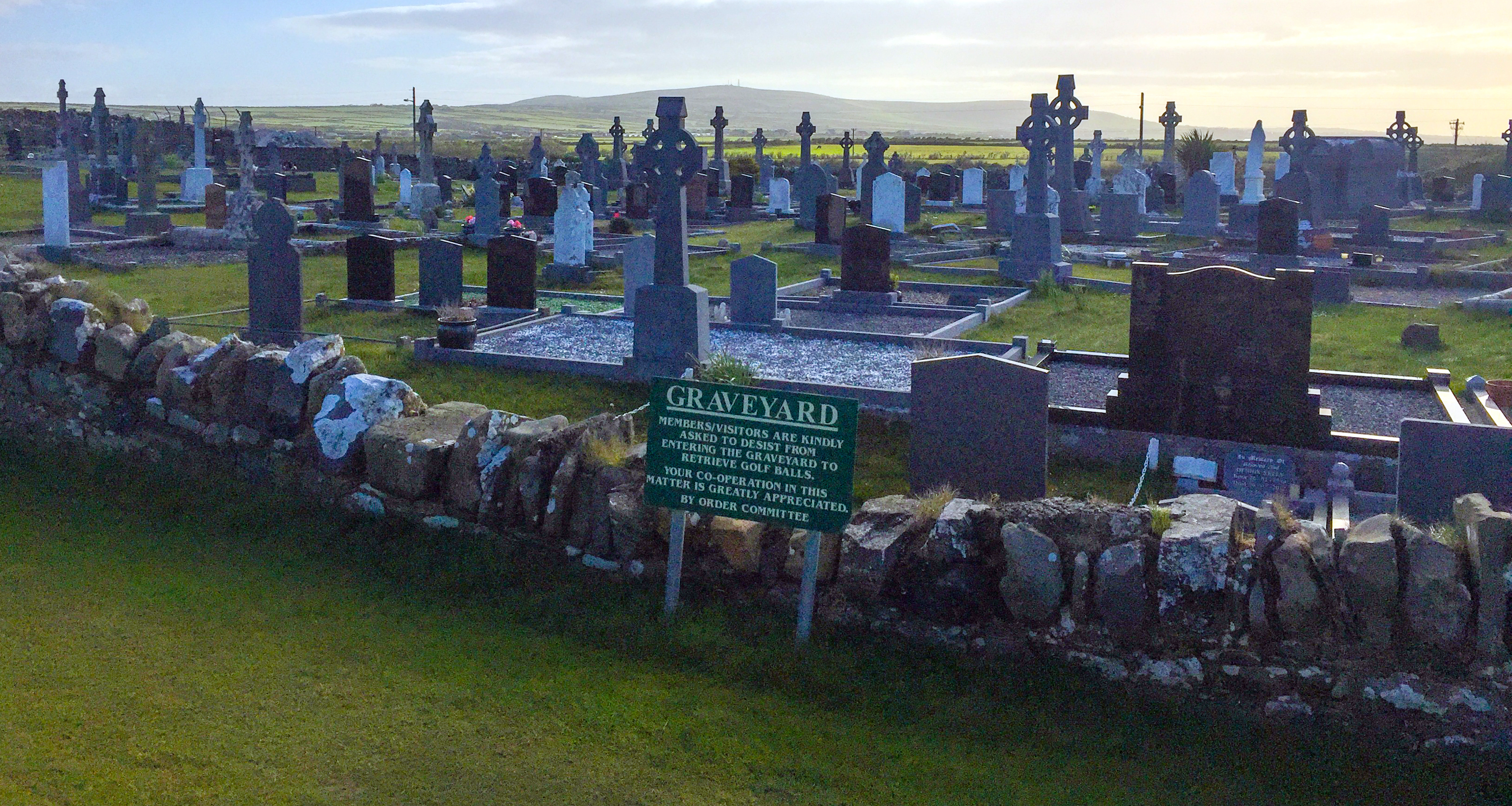
This is the thing we’re all trying to delay as long as possible (alongside the first fairway at Ballybunion, 32,282 steps, 15.6 miles)
In lots of ways, I’m a non-ideal user of a sophisticated gadget like a Microsoft Band. I don’t want my wrist to tell me I’ve just received an email, a text message, or a smartphone notification, or to connect me to Facebook and Twitter—all chores that the Band is able to perform but that I don’t allow even my phone to handle. I don’t want to track my sleep every night (although I did do it twice, and was interested in the results, especially my “resting heart rate”). I don’t want to monitor my weight, and not only because I recently decided that from now on I’m going to weigh myself only twice a year, if that. I don’t care how many calories my activities supposedly burn, except as a rough approximation of how busy I was being, because I don’t think anyone really knows what the numbers mean. But all the potential annoyances are easy to turn off, or not to turn on on the first place, or to ignore. And there are many people who truly do love stuff like that.

I do like counting my steps and knowing how many miles I walk when I play golf or walk my dog, and I like the cycling app, and I like to be able to check the local temperature and forecast by glancing at my wrist. I also like the small but surprisingly effective nudge the Band gives me throughout the day. You can even have it remind you to get off your butt if you’ve been motionless for too long. Quantifying even ordinary activities can inspire you to be more active, especially if you like to compete against people who are easy to beat, such as yourself. If I notice that I’m a couple of thousand steps short of some big round number, I’ll grab the leash. And that’s good for the dog as well as for me.

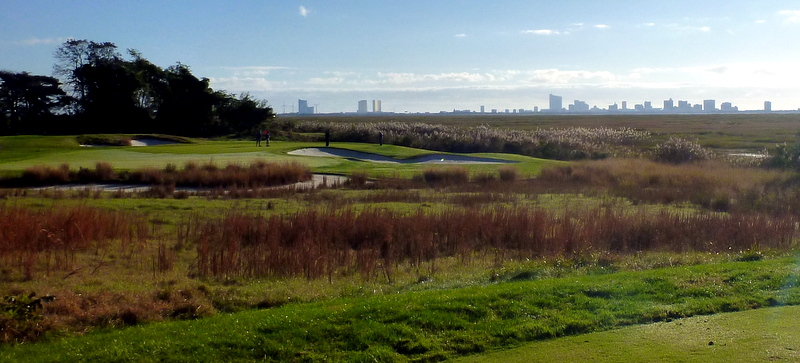

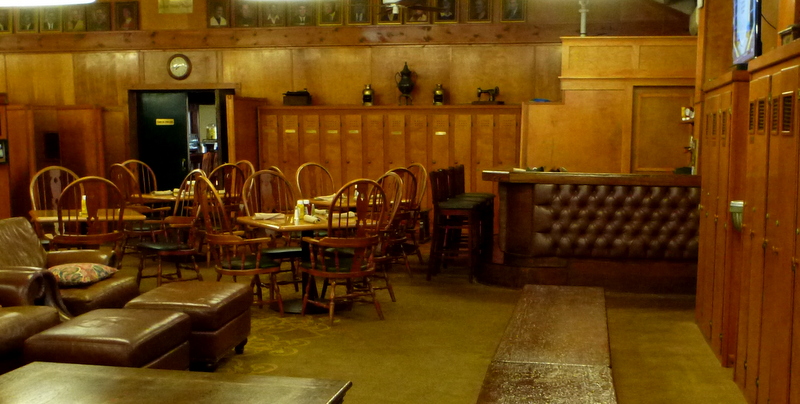

























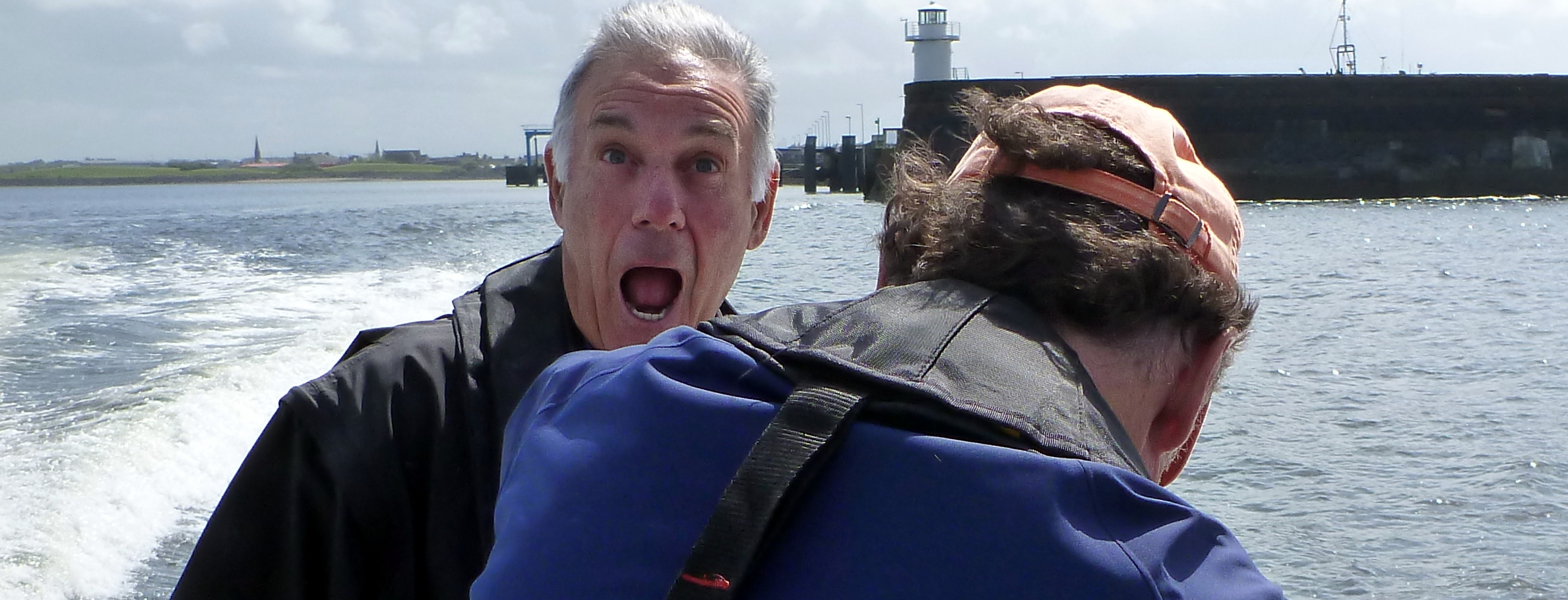



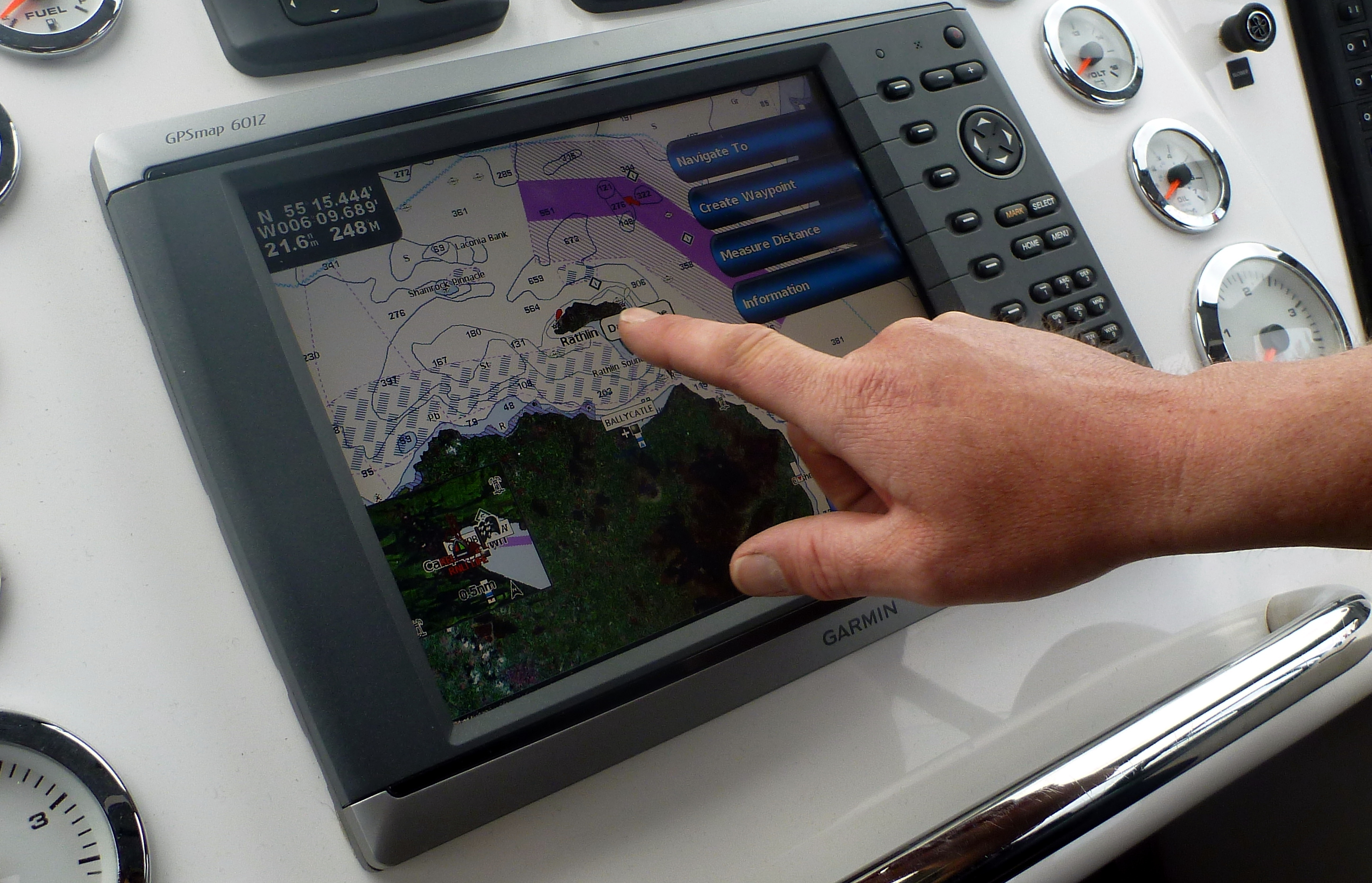

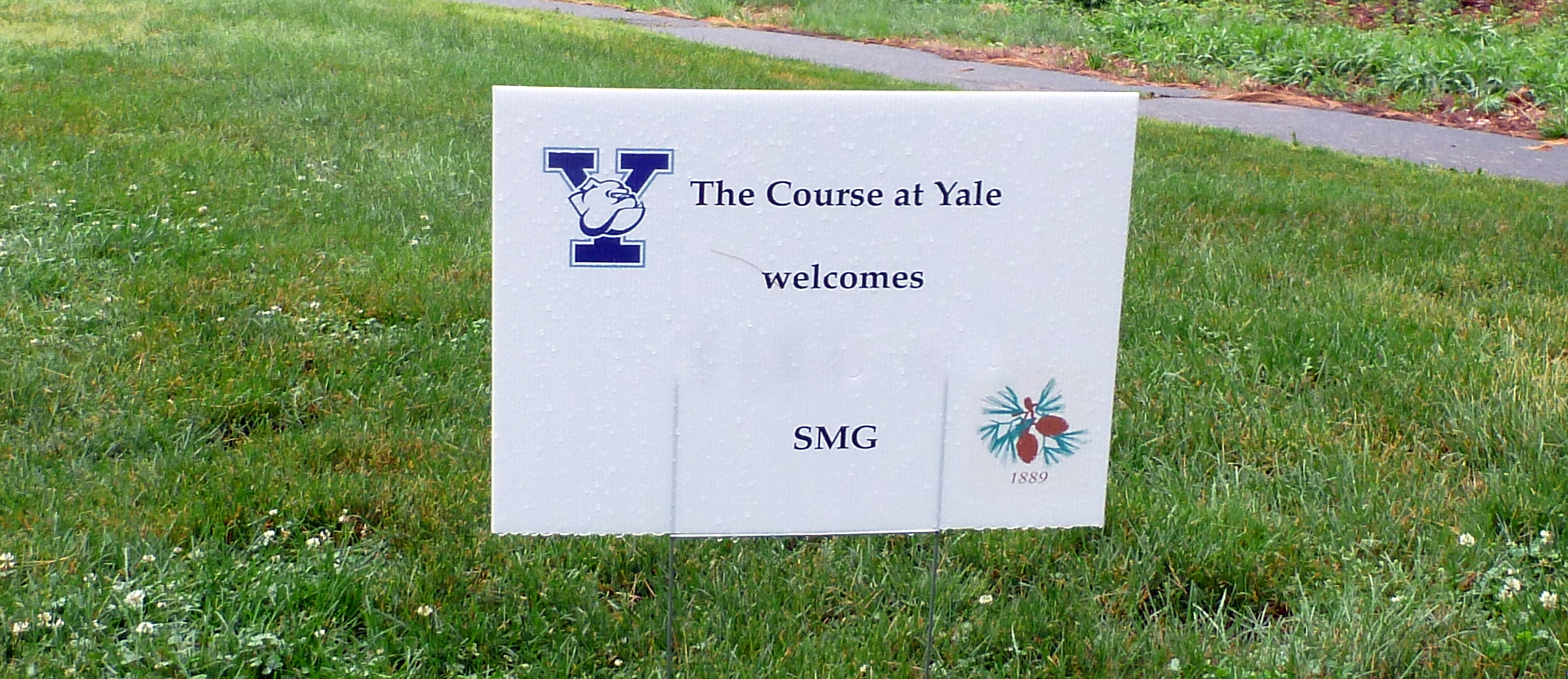




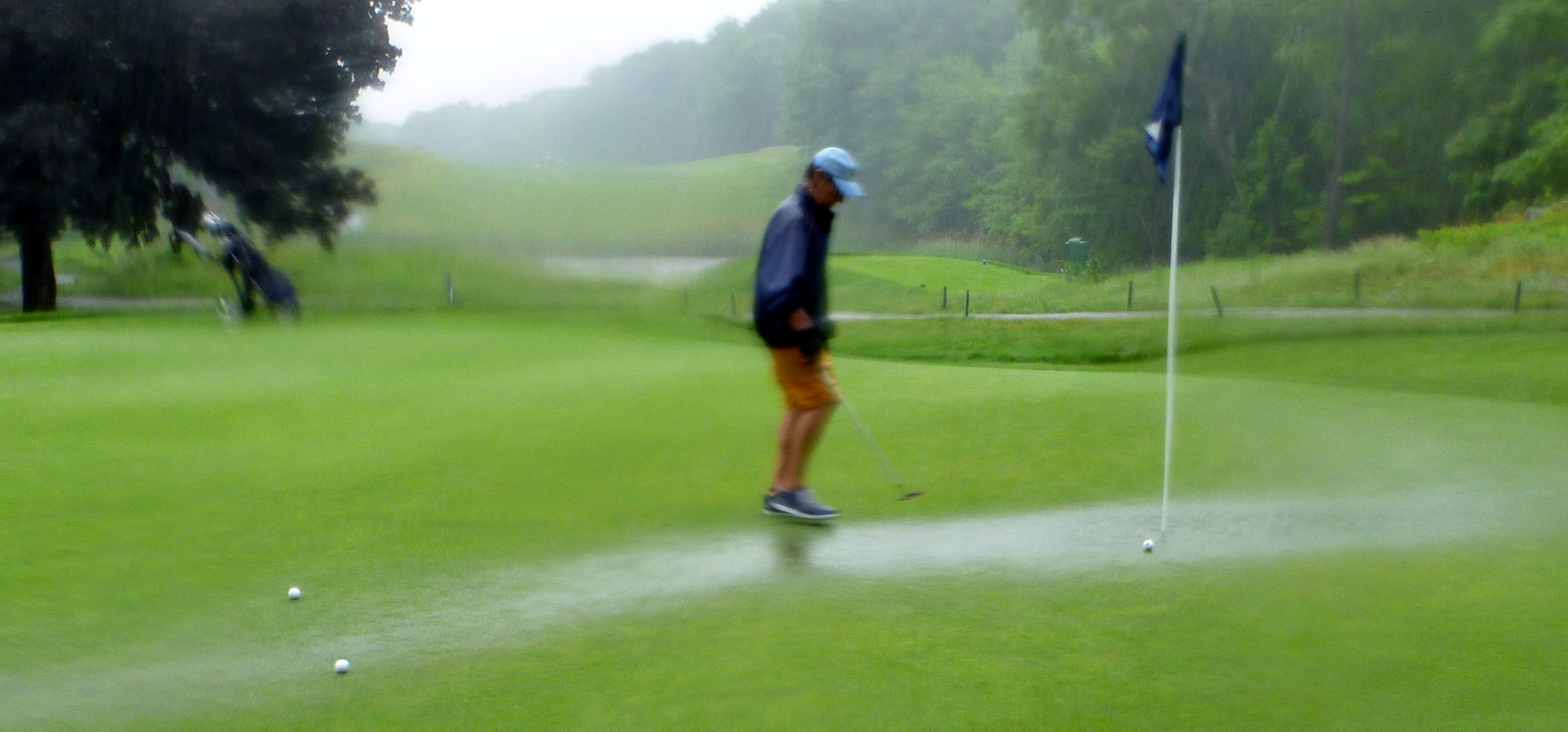




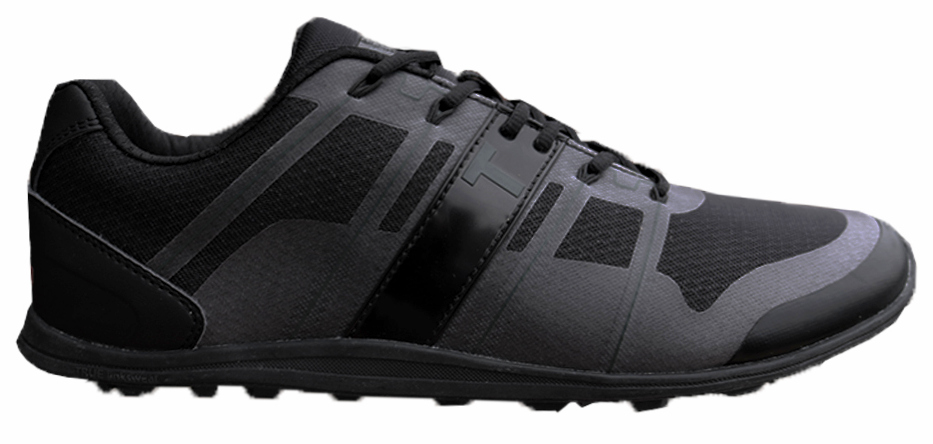
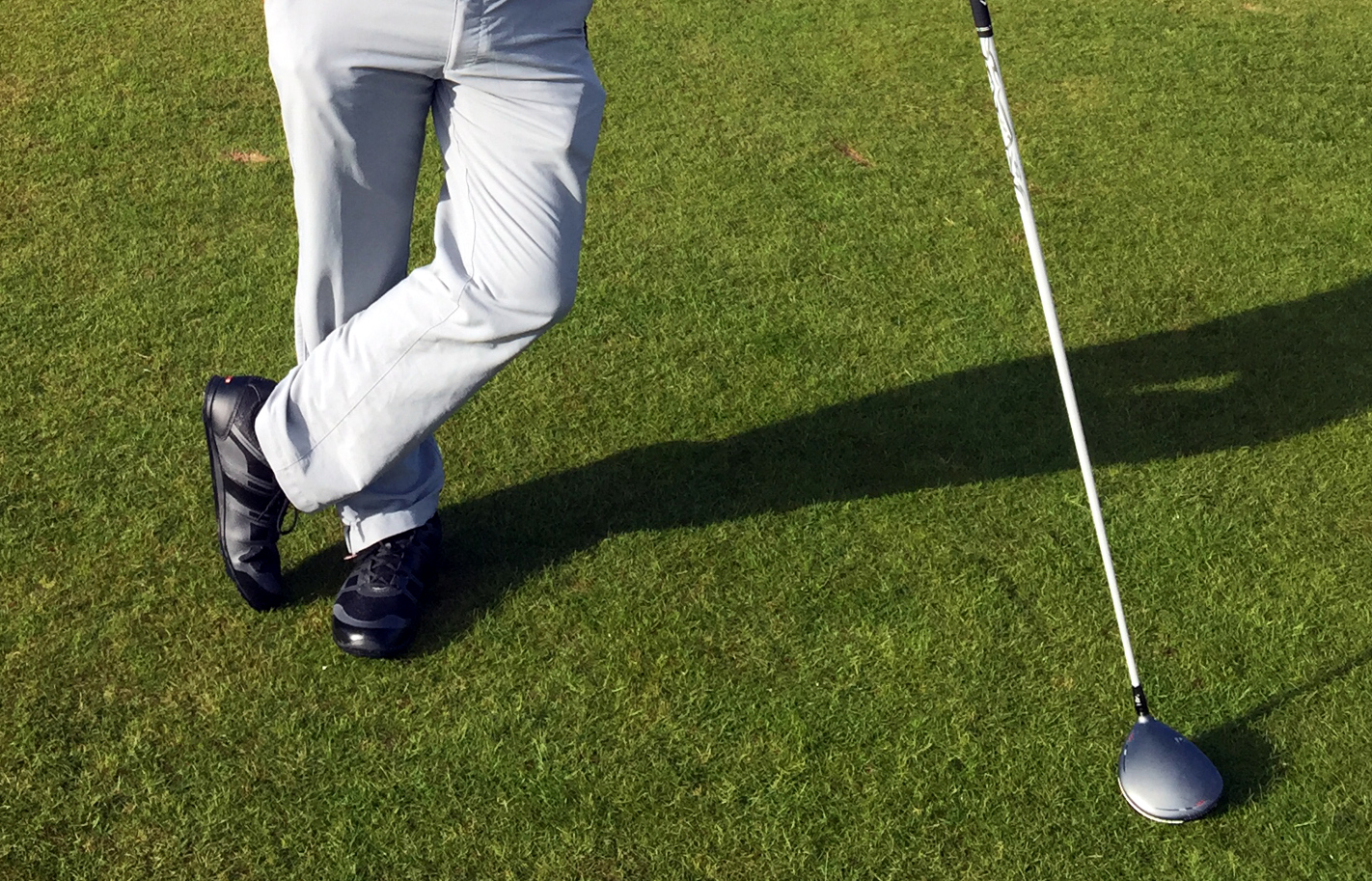


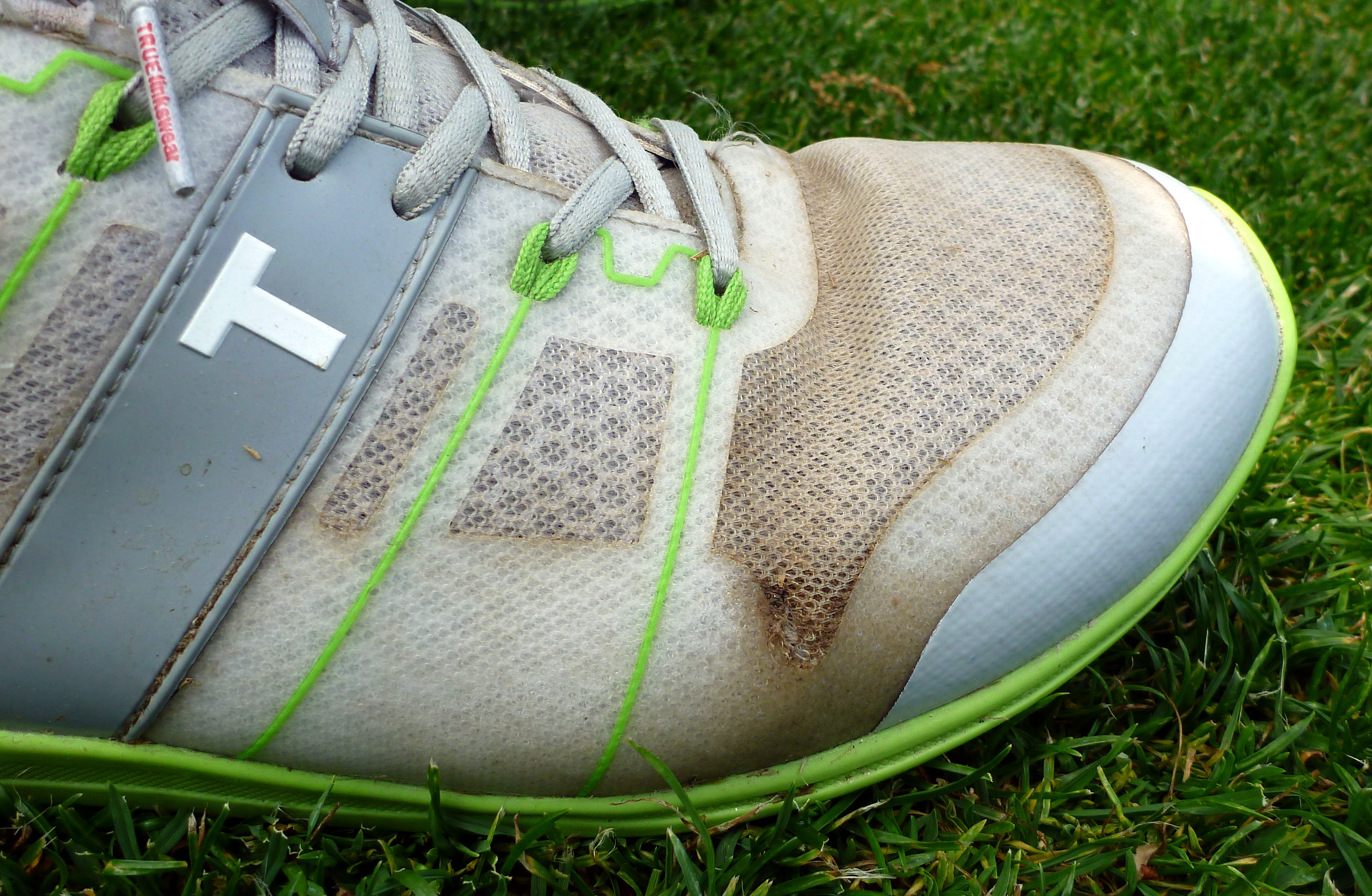


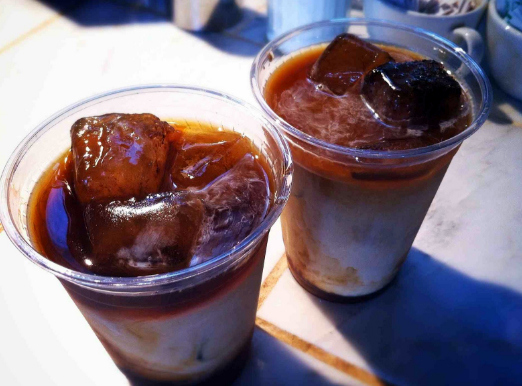

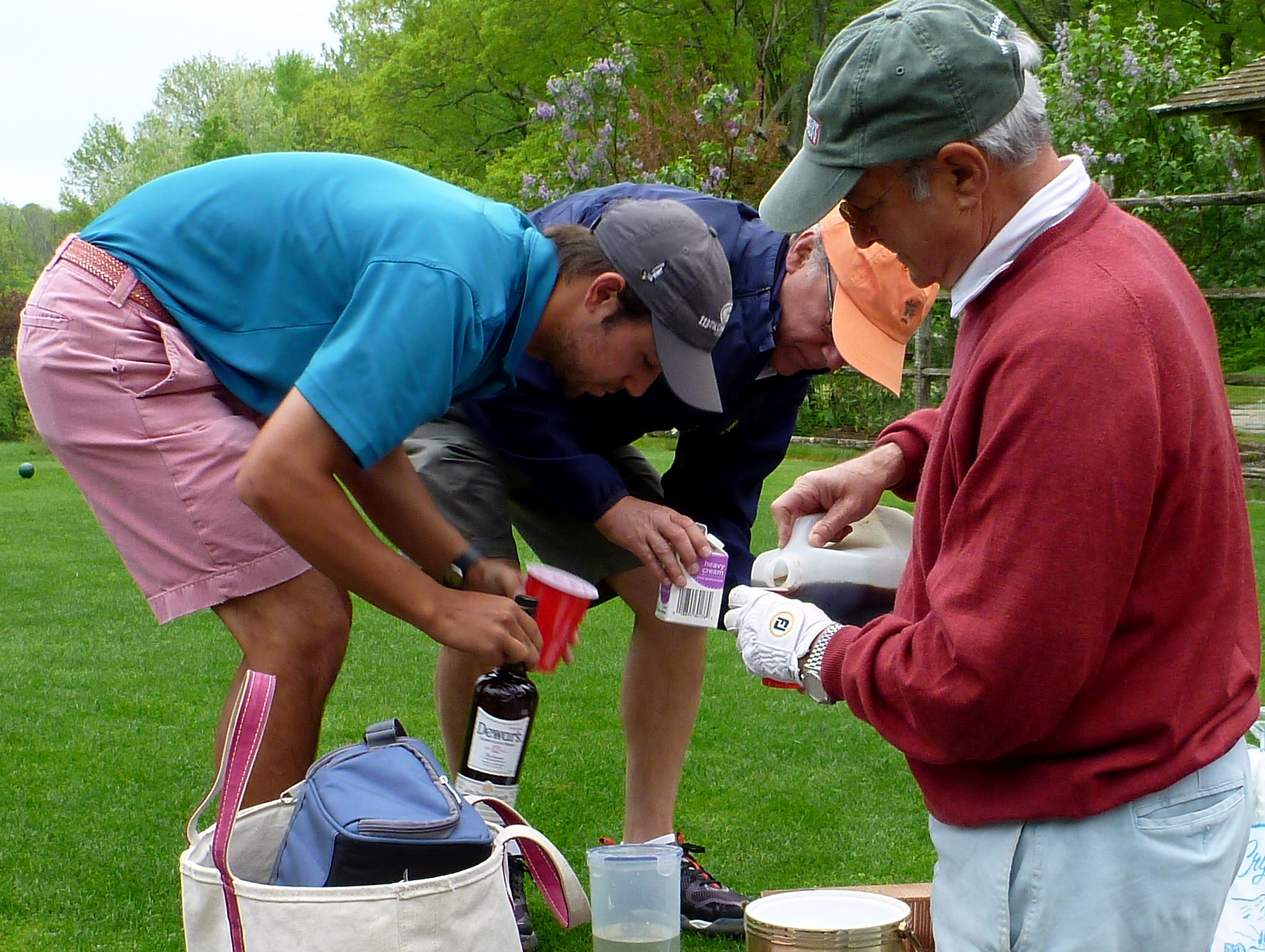

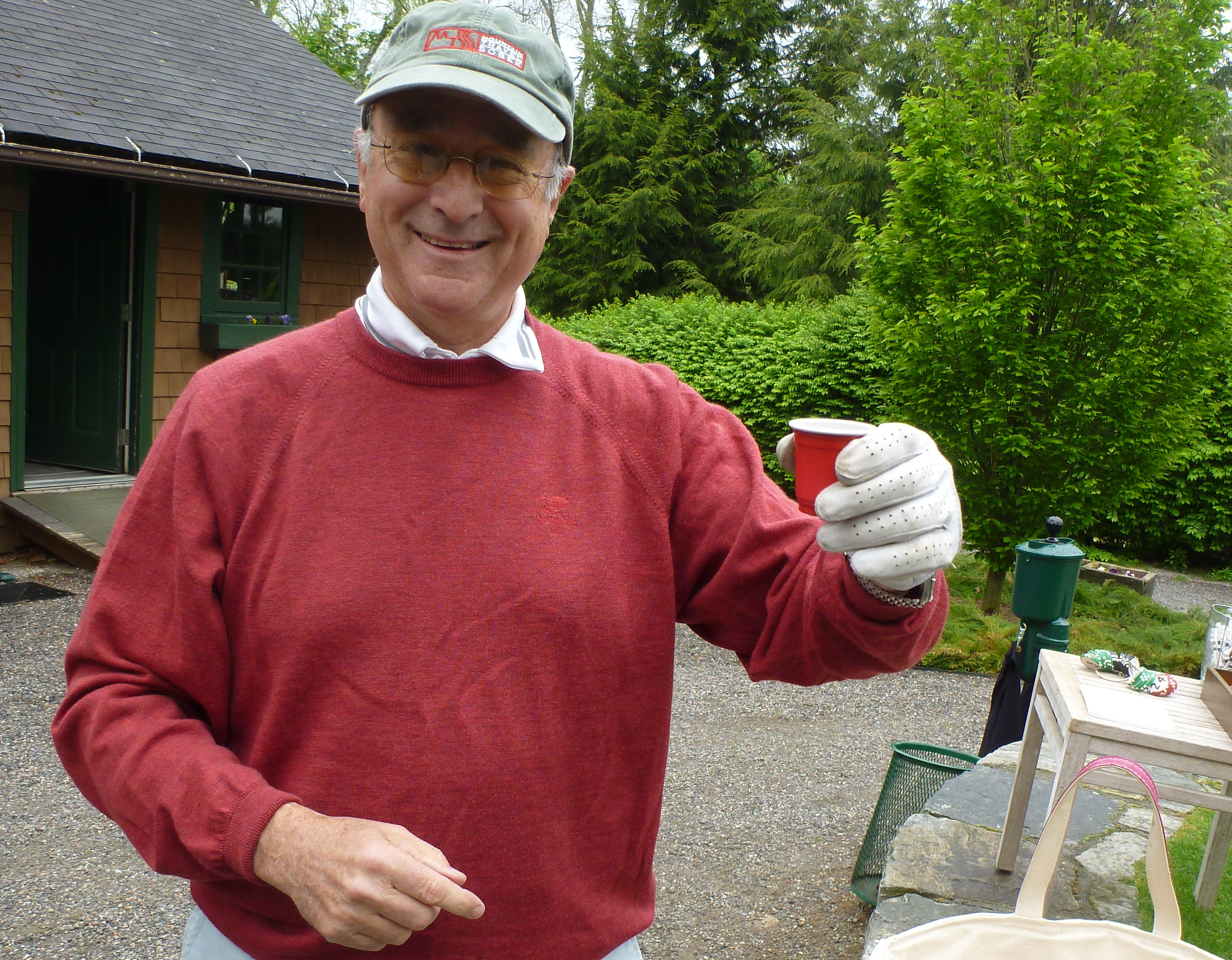
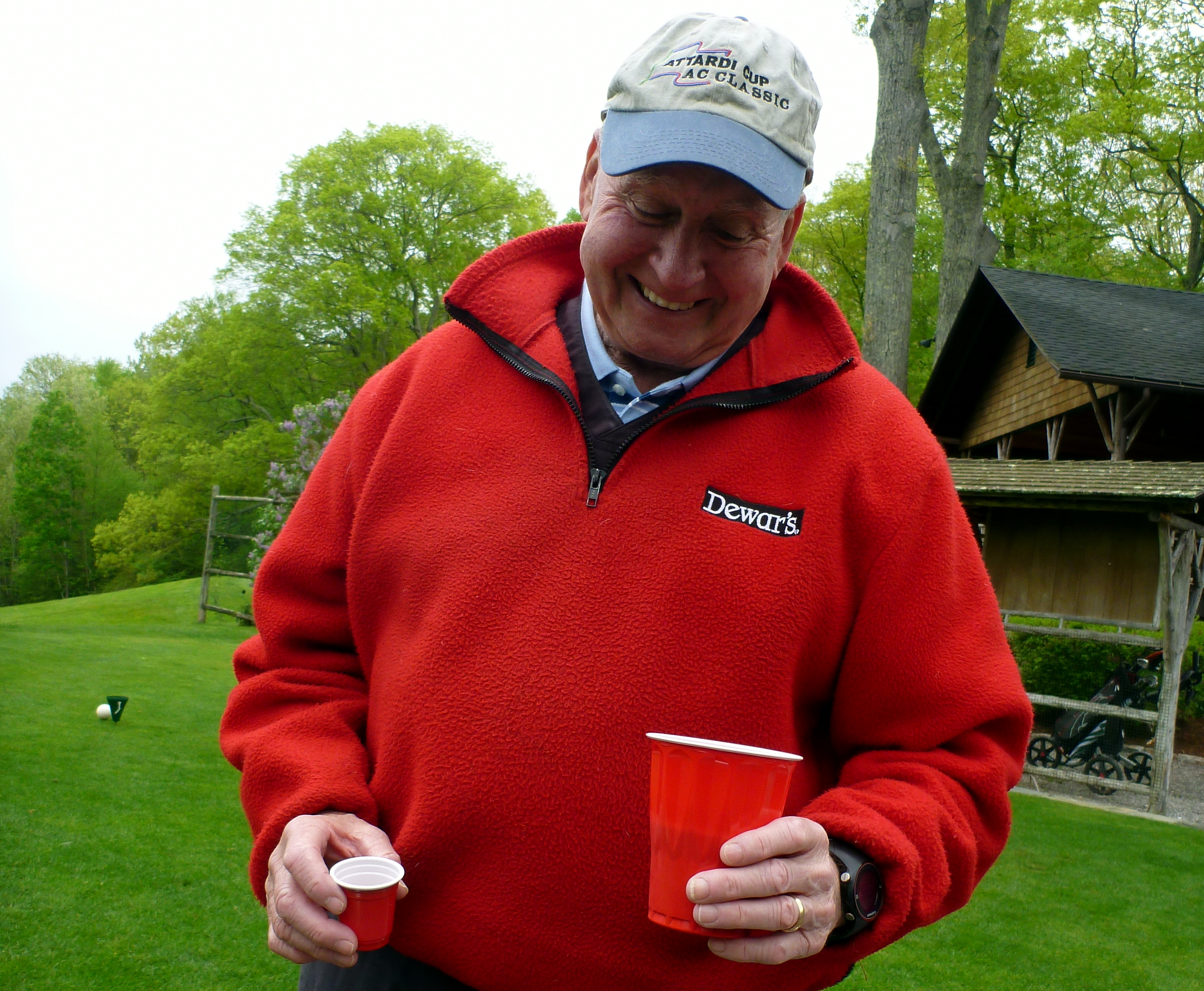
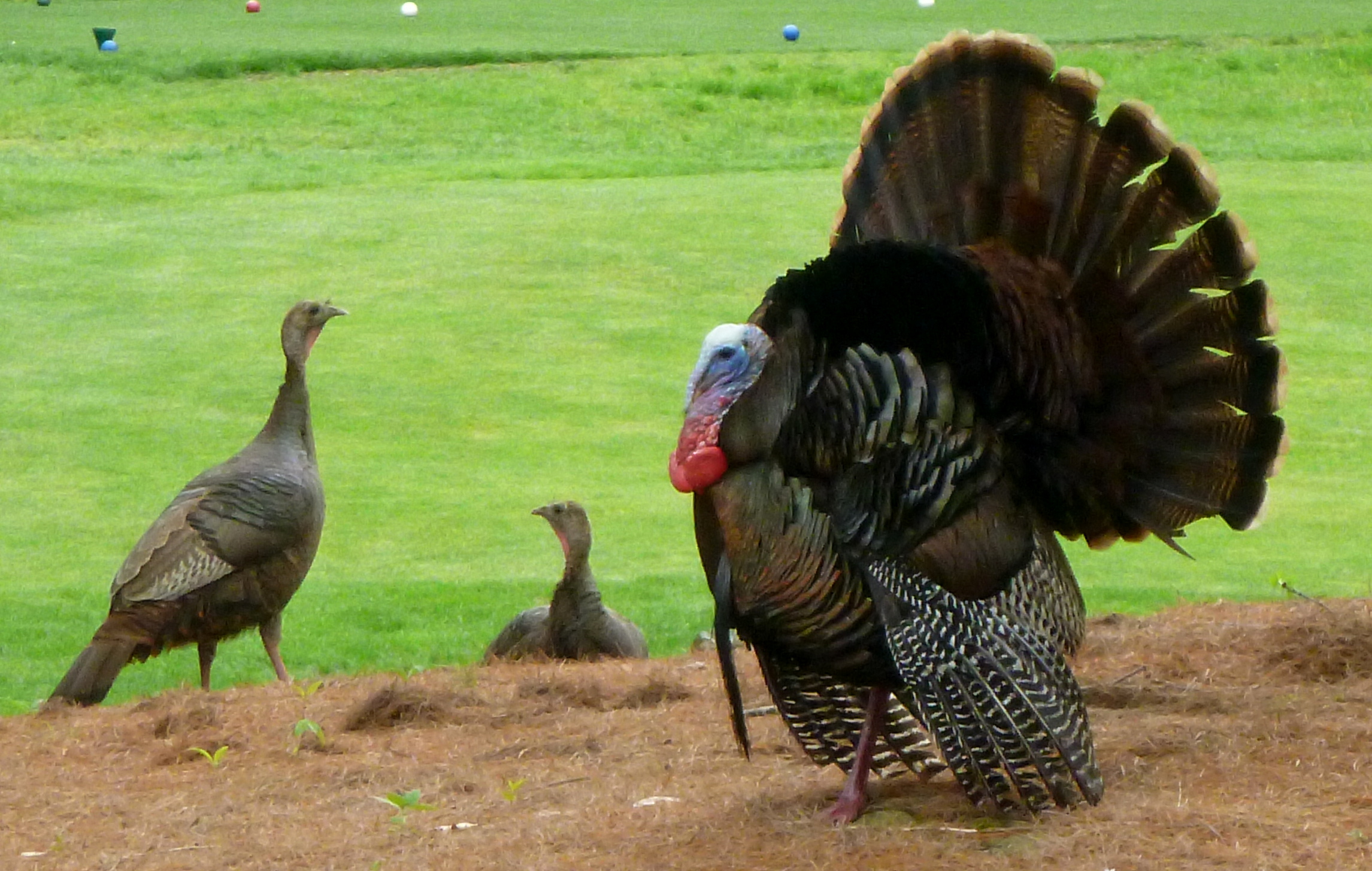

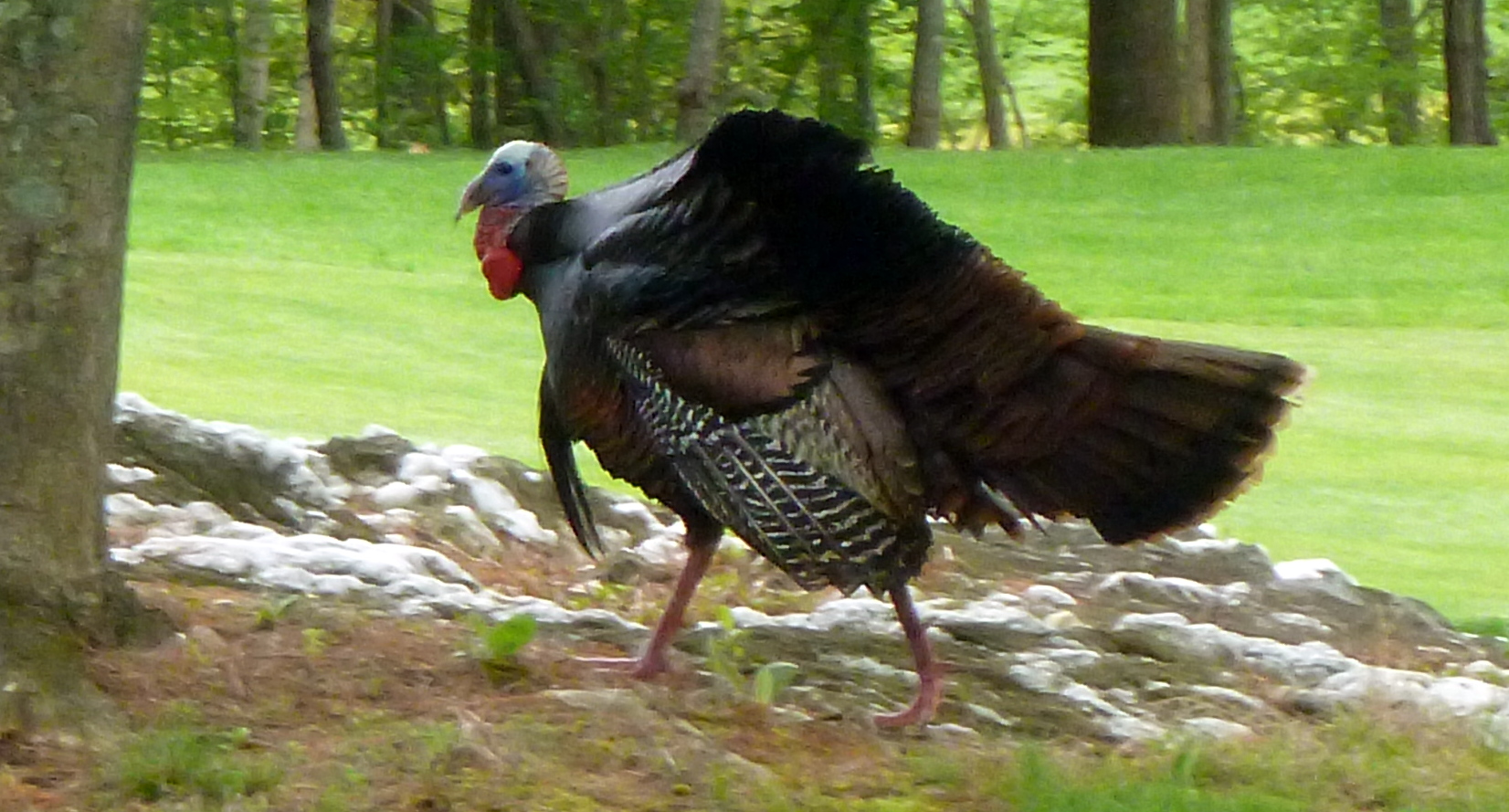
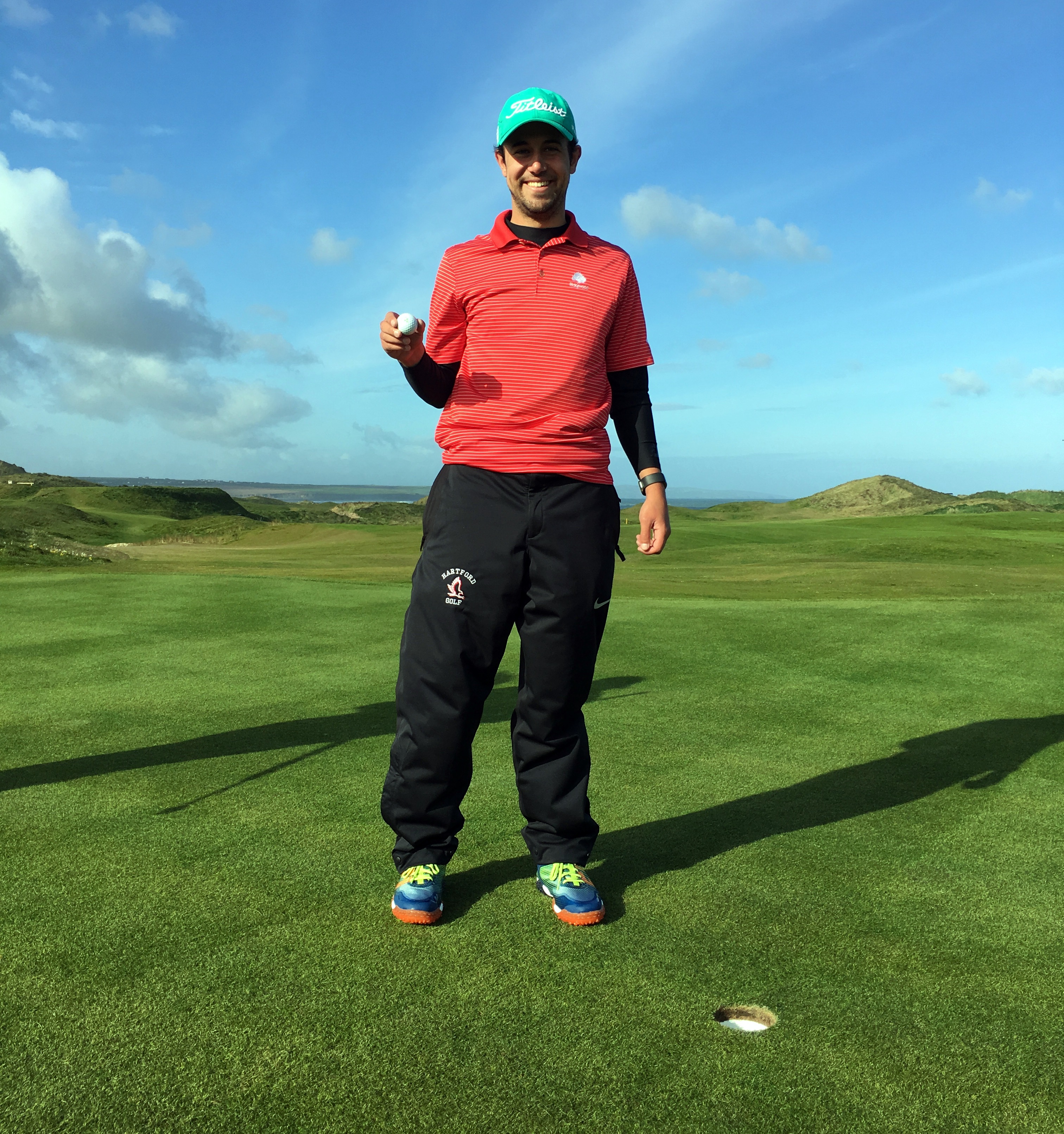
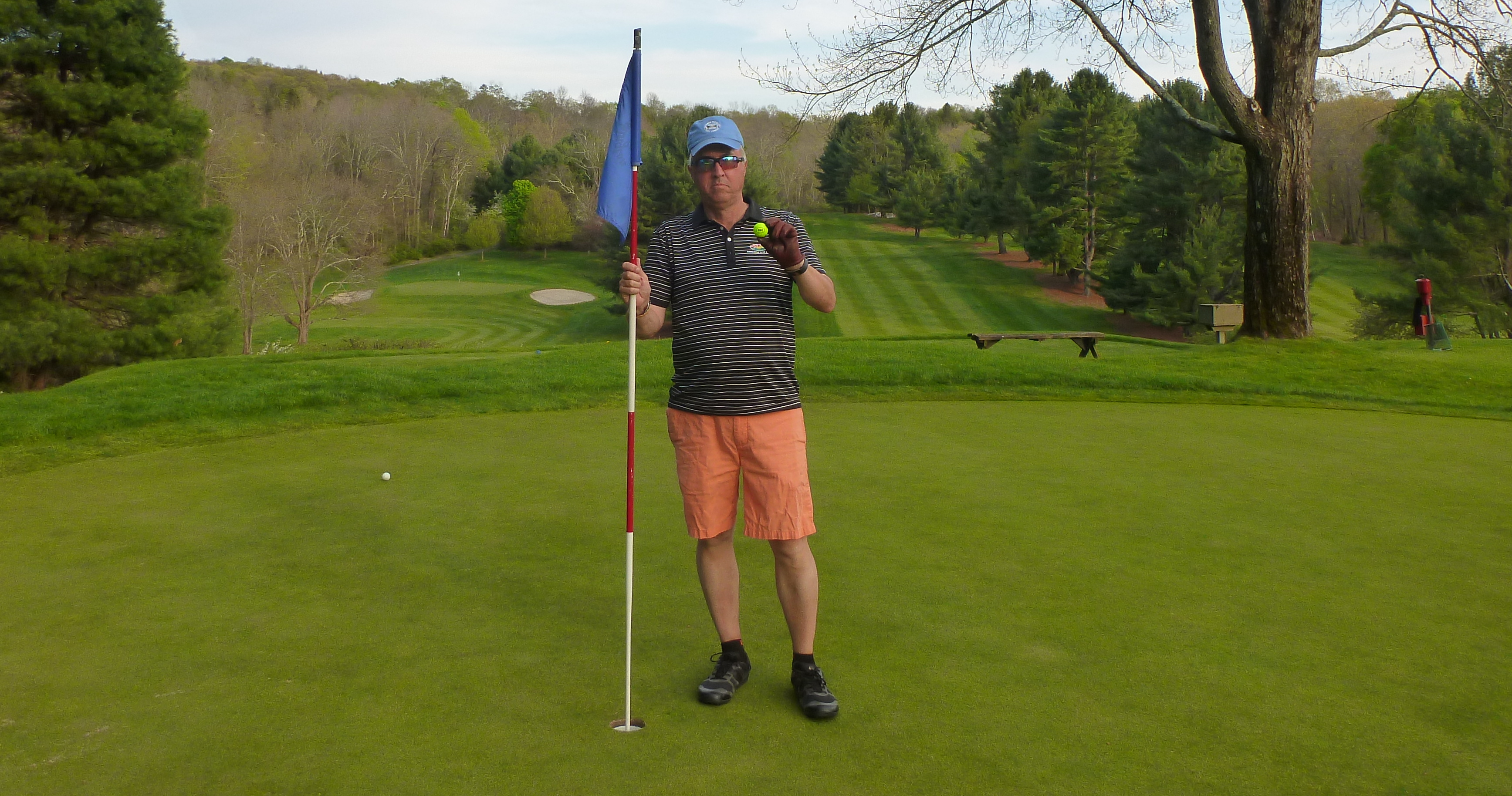 Two weeks after that, Chris, during his first round ever with the Sunday Morning Group, made a hole-in-one on our twelfth hole, which is 185 yards long. Nobody in his group could see that far, so they weren’t sure his ball had really gone in until they got to the green. In the photo below, which was taken by Mike B., he’s retrieving his ball from the cup:
Two weeks after that, Chris, during his first round ever with the Sunday Morning Group, made a hole-in-one on our twelfth hole, which is 185 yards long. Nobody in his group could see that far, so they weren’t sure his ball had really gone in until they got to the green. In the photo below, which was taken by Mike B., he’s retrieving his ball from the cup:
